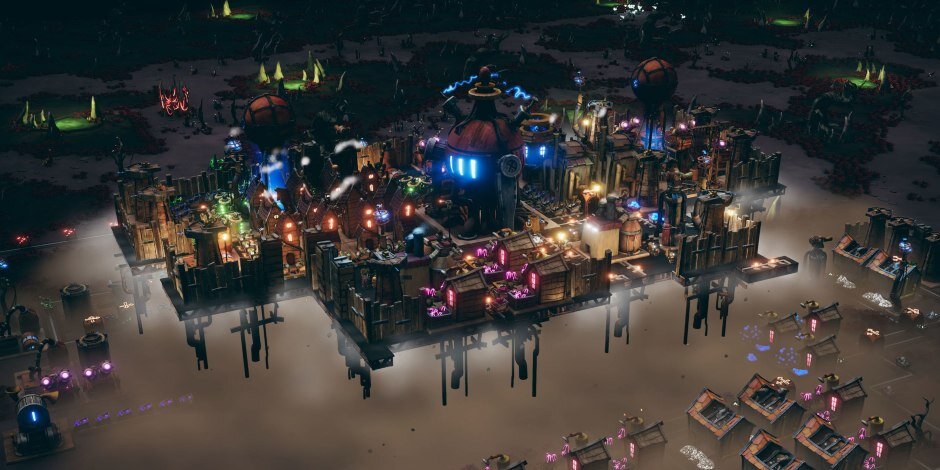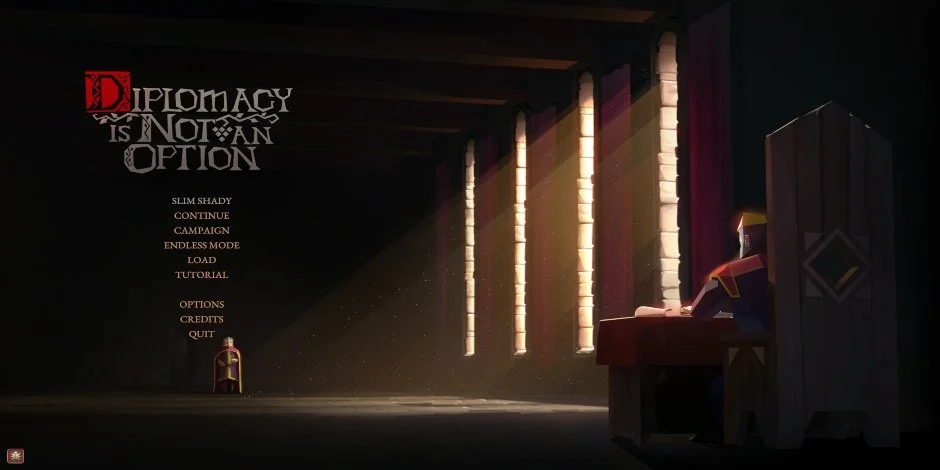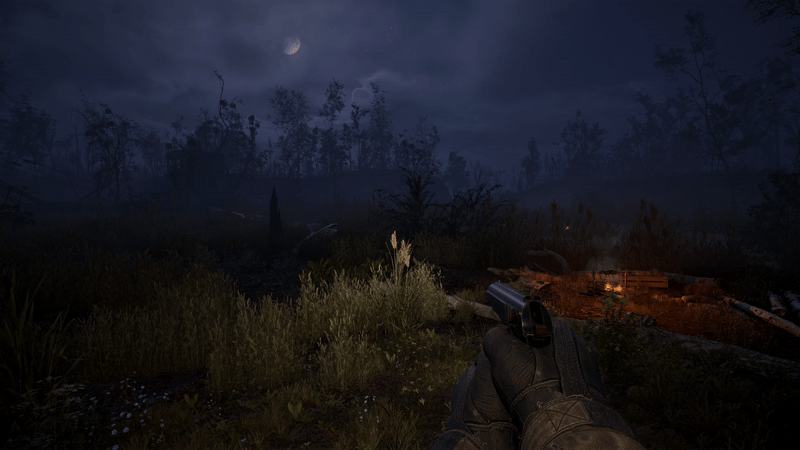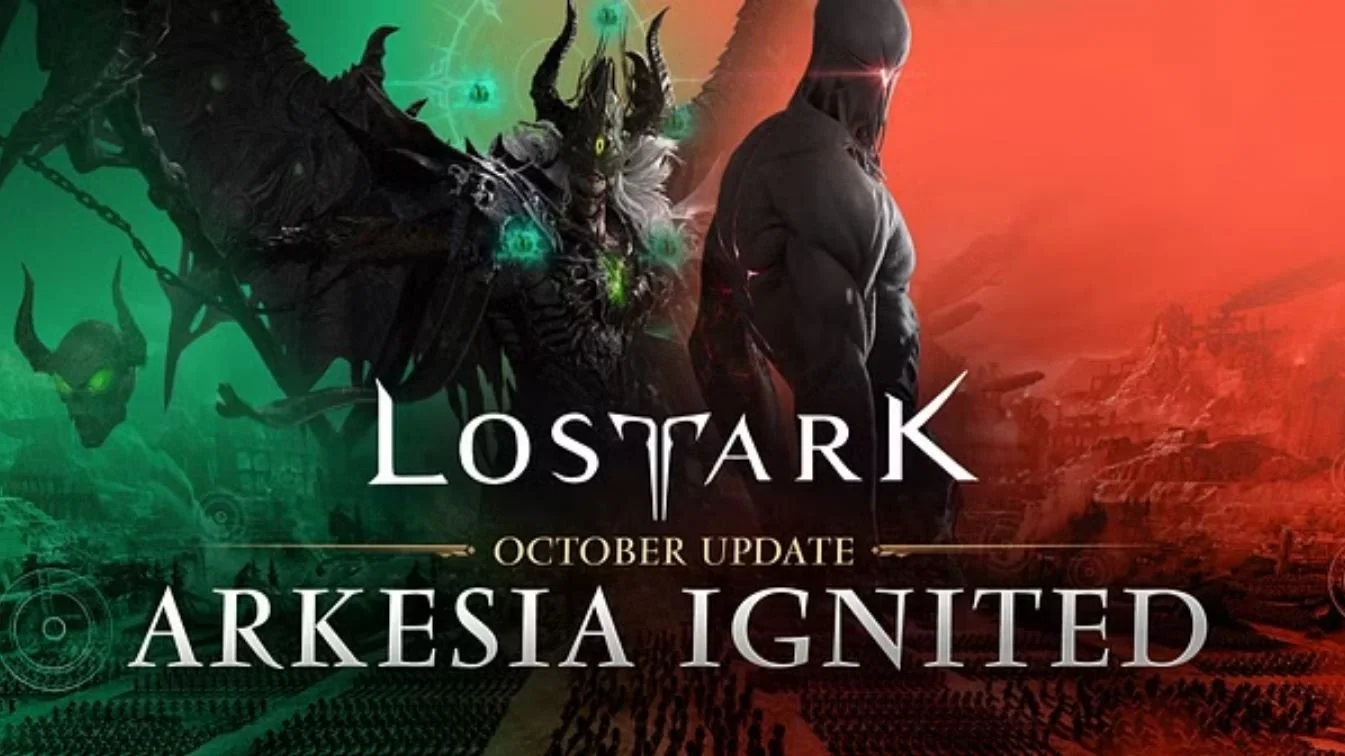Steam Early Access Key Provided By Suncrash
Dream Engines: Nomad Cities is created by indie studio, Suncrash, and published by Gamera Game. It’s a quirky, Tim Burton-ish, city-building survival game that allows you to pick up your base and fly away during invasions. I’m going to start out by saying I love the concept and goal of what Dream Engines strives to achieve. Unfortunately, I found a few issues that make me skeptical about its ability to pull it off. There’s still promise for this indie title, especially as the developers seem keen on listening to players during this Early Access phase.
Gameplay
While following previous concepts of other city-building survival titles, this game adds a unique layer of strategic decision-making. Choosing how and when to fly your city away from the threat of being overrun by enemy Dream Plagues, you will regularly abandon infrastructure in order to protect the core of your settlement. You also have to figure out how you plan to build your city to prepare for an inevitable departure. Not all buildings can travel with you on your limited-size platform, so you must choose your building layout carefully.
While you can upgrade the size of the city’s flyable platform, it comes with a cost of time and resources (both are valuable and limited). The game sometimes feels like a version of Tetris, as you routinely have to move structures around to fit the portion of your layout that flys away. You’ll be abandoning buildings each departure, requiring you to rebuild various structures and fortifications once you land.
Moving around your city, you control a Steambot named Tiny who can also help you defend your settlement, seek resources, and build infrastructure. Using Tiny’s missile/melee attack abilities, you defend against swarming invaders. This generally feels like a distraction and chore, rather than an enjoyable and fun component of the game.
There is a strong factory-management aspect too, where you create (and operate) supply chains from raw resources, in and out of various refinement buildings. This tends to complicate your city’s design layout and has a finicky construction process overall. When dragging your mouse to lay routes, you’d expect it to follow your exact path (around objects and buildings). Instead, it will autocorrect and adjust the path into unworkable areas, preventing you from building. When this happens, you have to start the process over and lay the railways segments one piece at a time. A settings option to eliminate the pathway autocorrect would be an easy fix.
Dream Engines allows you to research new technologies, craft equipment, and build fortifications to protect your people and settlement. These are promising areas of gameplay that have the potential to create replayability. City defenses and fortifications, however, do feel a bit light and inconsequential. I imagine the goal is to keep this from being a tower-defense game and focus on preparing your city for inevitable retreat flights. The defenses aren’t meant to hold off your enemies indefinitely, but rather to simply give you enough time to pack up and get out!
A final note on gameplay, the intro to the game feels very underwhelming. It’s lacking an opening cinematic, artwork, or even a narrative to the story and setting. Even worse, the tutorial is boring and full of annoying pop-ups you have to keep reading through. It creates a bit of a barrier to the actual immersion and proper introduction of the story and core gameplay functions.
Expectations
For a game that has been picking up awards and recognition such as “Best in Conference from Games Gathering” and “Finalist of Digital Dragons Indie Celebration”, I had higher hopes. That’s not to say this game doesn’t have great ideas and potential. If the developers implement some quality of life changes and improve certain gameplay functions, they will be heading in the right direction. I’m not ready to write this off, but I do believe there is work to be done.
Conclusion
I’d really like to see improvement to the tutorial and the addition of a proper intro story that helps immerse you into the world. Overall there’s a certain clunkiness and feeling of unnecessary complexity and monotony to the whole game. Additionally, there’s a lack of visual customization options. If you’re running on an older computer, this game gets choppy and there’s very little you can do to control this through the settings.
That said, I’m really pleased with the developer's response to feedback from Early Access comments. This gives me a lot of confidence that they’re determined to take a great idea and make it a fun and memorable game. I don’t feel like it’s quite there yet, but that’s the beauty of Early Access. Now is the perfect time to work out these kinks.



















